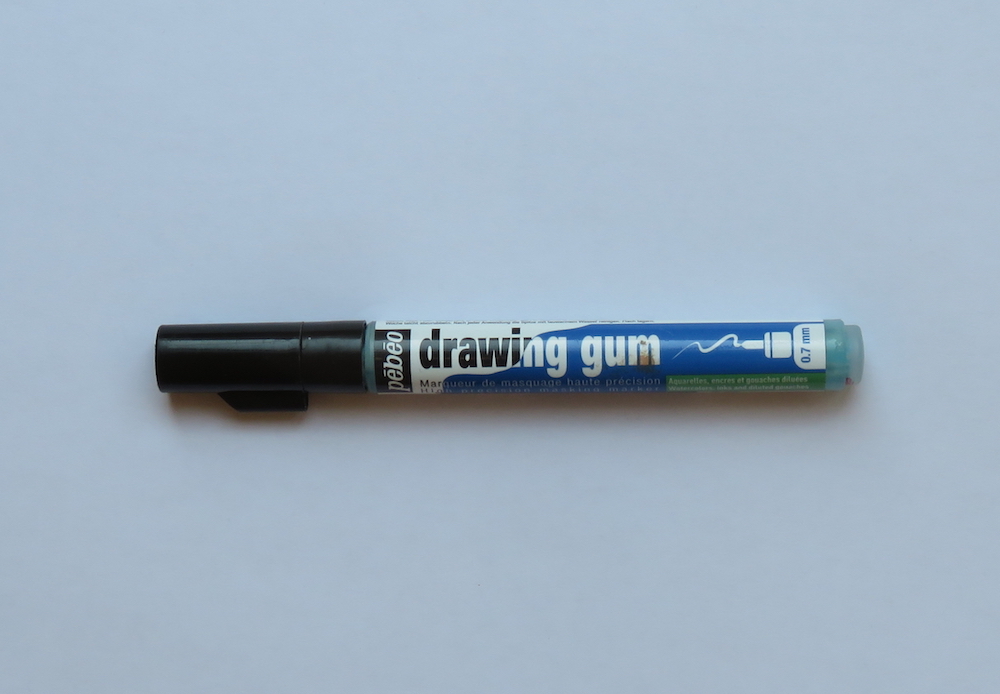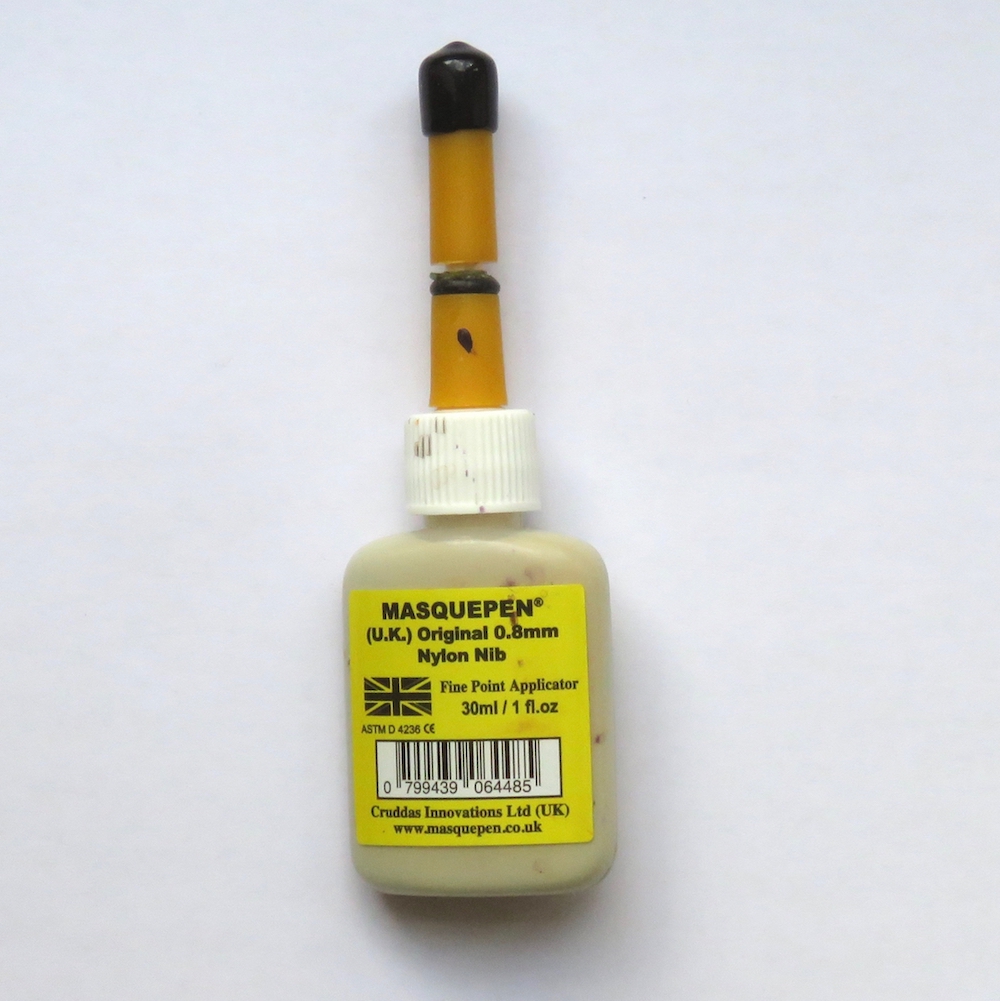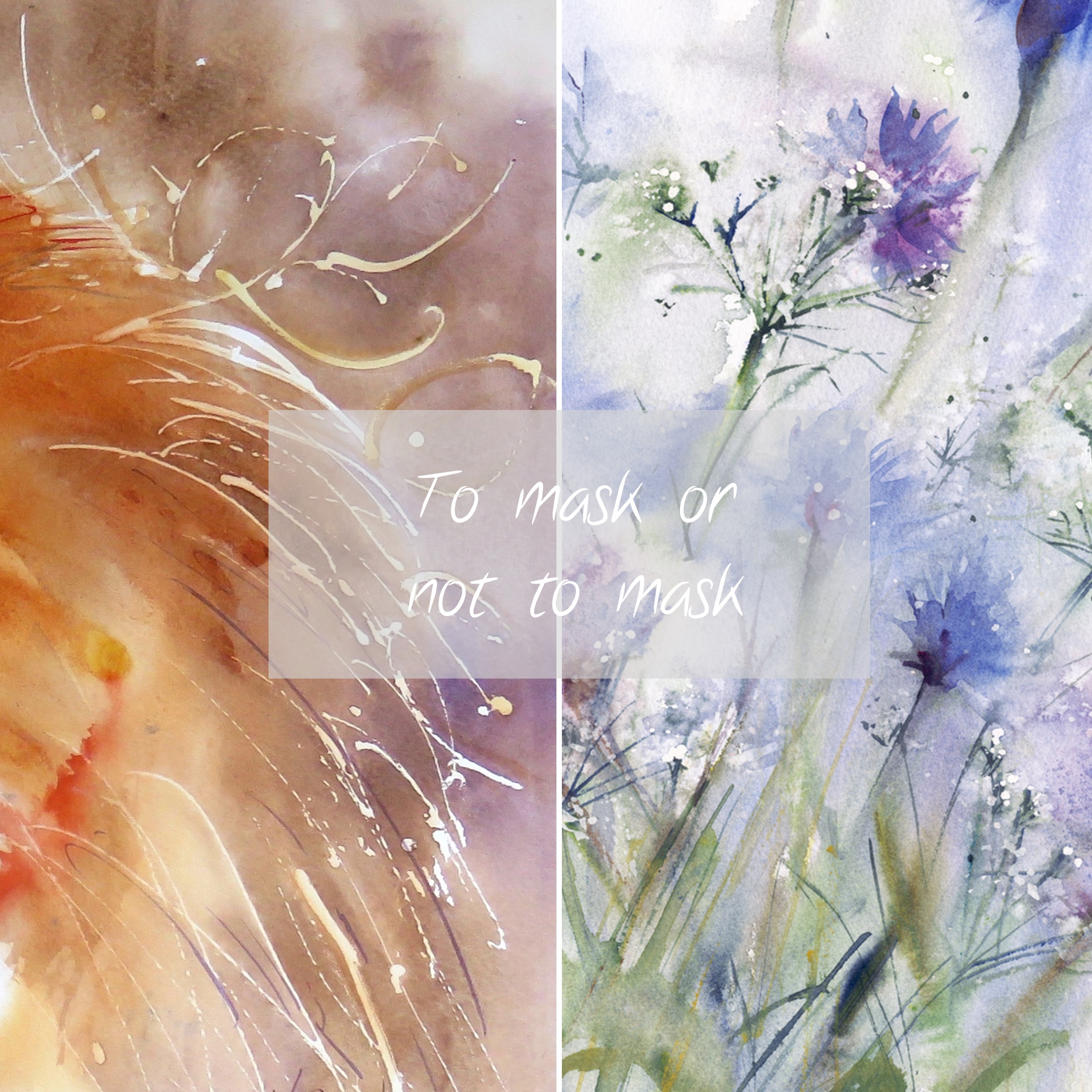Free Tips and Techniques: Masking Fluid
Hands up, I’ve never been a huge fan of masking fluid. However, I have recently changed my mind and I hope to explain why and the products I have discovered on my journey.
Standard Masking Fluid
So, here we have the original tub of masking fluid, a gooey pot of rubbery gum. I could never find a suitable applicator which I wasn’t prepared to wreck when forgetting to rinse immediately afterwards.
The results for me were always disappointing.
Unsatsified with blobbing the fluid onto the paper with the wooden handle of a paintbrush, I stopped using it for a while.
BUT, it can be beautiful to retain the whites of the paper in parts of your paintings and I was really pleased to learn about the advancement of other produces on the market.
Pebeo Drawing Gum
Finding this little gem was a game changer. It acts like a pen with a push down nib to release the fluid.
With the ability to draw very fine lines of fluid, we are now talking: Whiskers, stems, flower centres, insect legs, antennae. Brilliant!
One tip I can give is that, if you want a super fine line, I discharge a little of the masking fluid onto a scrap piece of paper, and then dip the nib into the fluid for application onto the painting.
Masquepen
Flushed with success, I have now added this beauty to my armoury.This masking fluid is dispensed via very thin tube and there is a pin in the lid which, when you’ve finished using, stops the fluid setting and blocking in the tube.
You can cover larger areas with this flowing masking fluid whilst also allowing a great amount on control and detail.
Both the Pebeo drawing gum and the Masquepen last ages and the masking fluid doesn’t coagulate as it can do in a tub.
Masque Off
And last but not least, this is a fabulous addition to your watercolour toolbox. Whilst it is really tempting to rub the dried masking fluid from the paper with your fingers, your skin could leave an oily deposit on the painting.
This rubber is not like a general eraser. It is quite solid in texture, and sticks to the masking fluid which removes it from the paper.
Highly recommended.
And just a few tips:
Apply masking fluid to dry paper.
ALWAYS, always, always allow the paper to dry to “bone dry” before removing the masking fluid. If you don’t, you will be in danger of tearing the paper. I have done this before and it can be heartbreaking!
Remember you can use masking fluid in layering of watercolours. But do always remember to allow the layers to dry before adding and removing masking fluid.
Here are a few examples of where I have been able to use the masking fluid to create some really fine lines.







